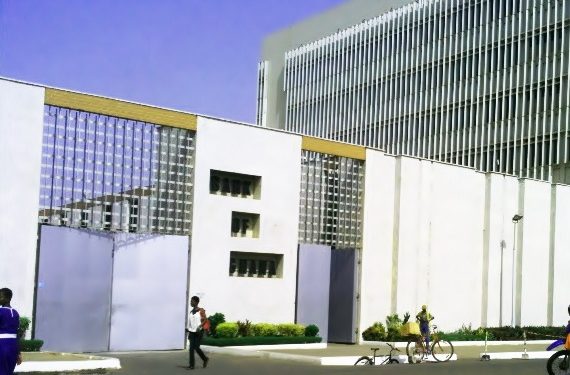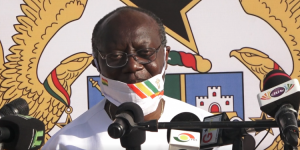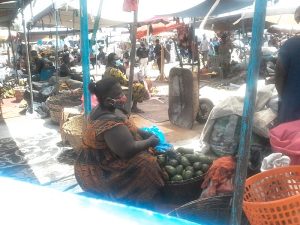GCB Capital says the Bank of Ghana (GCB) will likely stay its benchmark rate, the policy rate at 22 per cent after its next Monetary Policy Committee (MPC) meeting, which will conclude on September 25.
In its policy insight issued last week, the investment bank said the action should herald a monetary policy easing needed to stimulate growth.
The insight was issued after inflation peaked at 33.9 per cent in August, bucking the surging trend that emerged in November last year.
GCB Capital said its forecast of a stable policy rate in September was in spite of the fact that it expected inflation to rise again in October and November.
The company said while there was a case for further tightening of the monetary policy stance as inflation could continue higher, it expected the MPC to “stay rate-neutral for the remainder of 2022.”
“We believe the policy interventions at the emergency meeting in August were decisive and forward-looking, and their effectiveness in controlling the second-round effects of inflation should crystalise over time.
“However, with the restrained policy support for growth, we expect the quarter two growth numbers (due on Tuesday, September 20) to underwhelm.
“With the endogenous and exogenous shocks to growth amidst deteriorating living standards, further interest rate hikes will hurt economic activity and employment creation, reinforcing inflation.
“Consequently, we expect nominal interest rates to remain elevated through quarter four and the benchmark 91-day will close the year near 32 per cent,” GCB Capital said
Peaking inflation
The company said its forecast showed that inflation would climb higher over the following two months but could peak in November.
“We expect the pass-through effects of the exchange rate pressures, which we flagged in our July inflation update, and its lagged impact, to linger over the following two inflation windows.
“Additionally, the inflationary effects of the 2022 utility tariff hike that took effect on September 1, the imminent transport fare hike, and a potential re-emergence of cedi depreciation pressures around the Yuletide season also pose a risk to inflation in quarter four.
“Thus, with these price pressure points, we expect the headline inflation to print higher over the next three months,” it said.
Food inflation
GCB Capital however, said it expected a favourable price effect on inflation from the food basket from September as the onset of the primary crop harvest season could improve food supplies on the market.
“Thus, the harvest season effect and the favourable base pull could moderate the impact of the risk factors outlined above.
“Already the month-on-month numbers for the headline, food and non-food inflation have resumed a decline, and assuming continuous cedi stability supported by the cocoa loan syndication (base scenario), inflation could peak by November, all other things being equal,” it said.
Comment on August inflation
Ghana’s CPI Inflation spiked for the 15th consecutive month to 33.9 per cent year-on-year in August as the elevated cedi pressures during the August inflation data window, and the dominant push from imported inflation sustained the uptick across both the food and non-food baskets.
The cedi shaved off 14.51 per cent against the US dollar in August, weighted by the depleted foreign exchange (FX) reserves and the elevated FX demand pressure from investors, local corporates, and individuals.
“The pass through of cedi depreciation and imported inflation filtered through to general prices and kept petroleum prices higher, despite easing crude oil prices on the global market on the back of lingering concerns about recession in key economies in the near term.
Breakdown
Food inflation (weight: 43.7 per cent) increased to 34.4 per cent in August (vs Jul-22: 32.3 per cent) and accounted for 15.39 per cent of the August inflation print.
The slope of the food inflation curve sharpened again for the second consecutive month to 2.3 per cent (vs Jul-22: 1.6 per cent) but remained below the monthly average change of 2.7 per cent year-to-date (YTD).
However, on a month-on-month basis, food inflation resumed a downward trek, easing to 1.8 per cent in August (from 3.3 per cent in Jun-22) and representing the lowest month-on-month food inflation print in 2022.
Inflation from the heavily weighted non-food basket also increased to 33.6 per cent (vs Jul-22: 31.3 per cent) and dominated the overall inflation print with an 18.51 per cent share.
However, the slope of the non-food curve was gentler, rising marginally to 2.3 per cent (from 2.2 per cent in Jul-22) and closing the period below the average monthly change of 2.64 per cent YTD. M
The month-on-month non-food inflation also eased to two per cent (from three per cent in Jul-22) but remained above food inflation, which reflected a dominant near-term price pressure from the basket.







